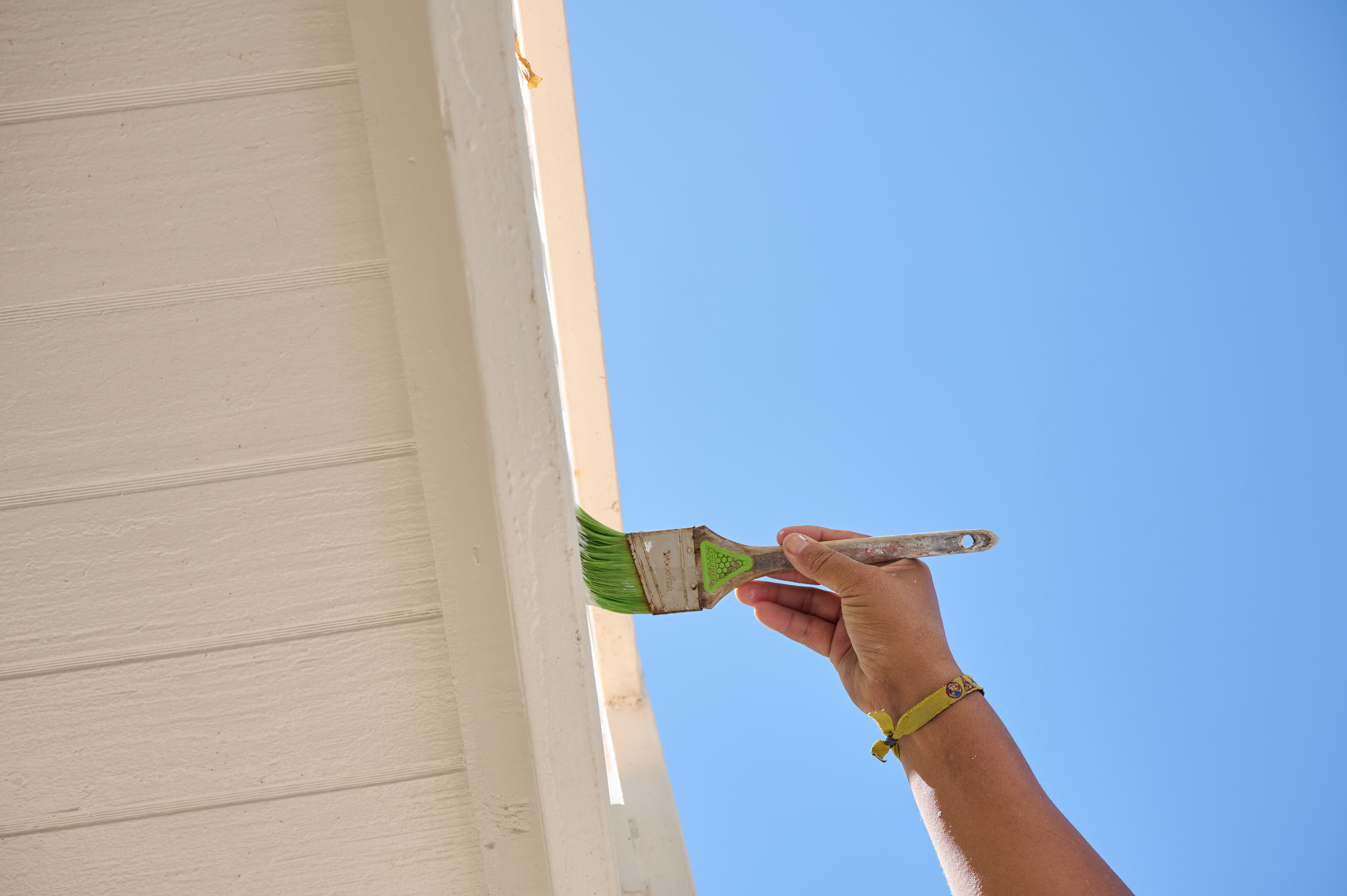
Painting your gutters can give your home the fresh finishing touch it needs to look its best. This guide walks you through the cost to paint gutters.
The right white paint can turn your home into a neighborhood focal point


With hundreds of shades of white paint to choose from, an exterior painter near you can help you pick the right one for your house.
Warm white colors reflect less light than neutral whites, and work nicely with black roofing and natural wood trim.
Cool white shades can give your home a modern look when paired with black or dark gray accents.
Neutral whites are bright and reflective—and the closest option to a pure white exterior paint color.
Before choosing a color, consider how it will appear in sunlight and how it will pair with your trim and doors.
White is a timeless paint color that can brighten and freshen your home's exterior. It's a great neutral backdrop for accent colors, whether you want to highlight flowers in your landscaping or architectural elements like trim or roofing. In fact, most roofs look great when paired with white house paint. However, painting a house white isn’t as simple as it may seem, as there are tons of modern white house exterior paint colors to choose from.
You heard that right: There are literally hundreds of variations of white, each with subtle undertones that span the rainbow. Slight differences in hue and lighting can create totally unique looks, even with the same white paint. If you find the right shade of white, it can boost your home's curb appeal and property value. We’ve collected some of the best options in this guide to help you choose.
The cost to paint the exterior of a house can be a lot. To ensure you get the best result without having to redo your whole exterior and pay double, it helps to understand paint undertones and how to determine what undertone your paint has.
All paint colors have undertones of primary or secondary colors. The presence of these undertones makes white a very diverse spectrum of shades. White paints range in hue from very warm to stark and cool. You’ll commonly see white-painted houses with hints of cool blue, gray, cream, yellow, or even green in certain lighting.
To determine the undertones in your favorite white paint shades, hold a paint sample against a sheet of white computer paper. The pure white of the paper should highlight the colors in the paint sample.
Sunlight can also have a warming effect that brings out certain warm undertones. To test how a paint color looks in sunlight, paint a piece of cardboard or a small section of your home and watch as the sun hits it at different times of the day.
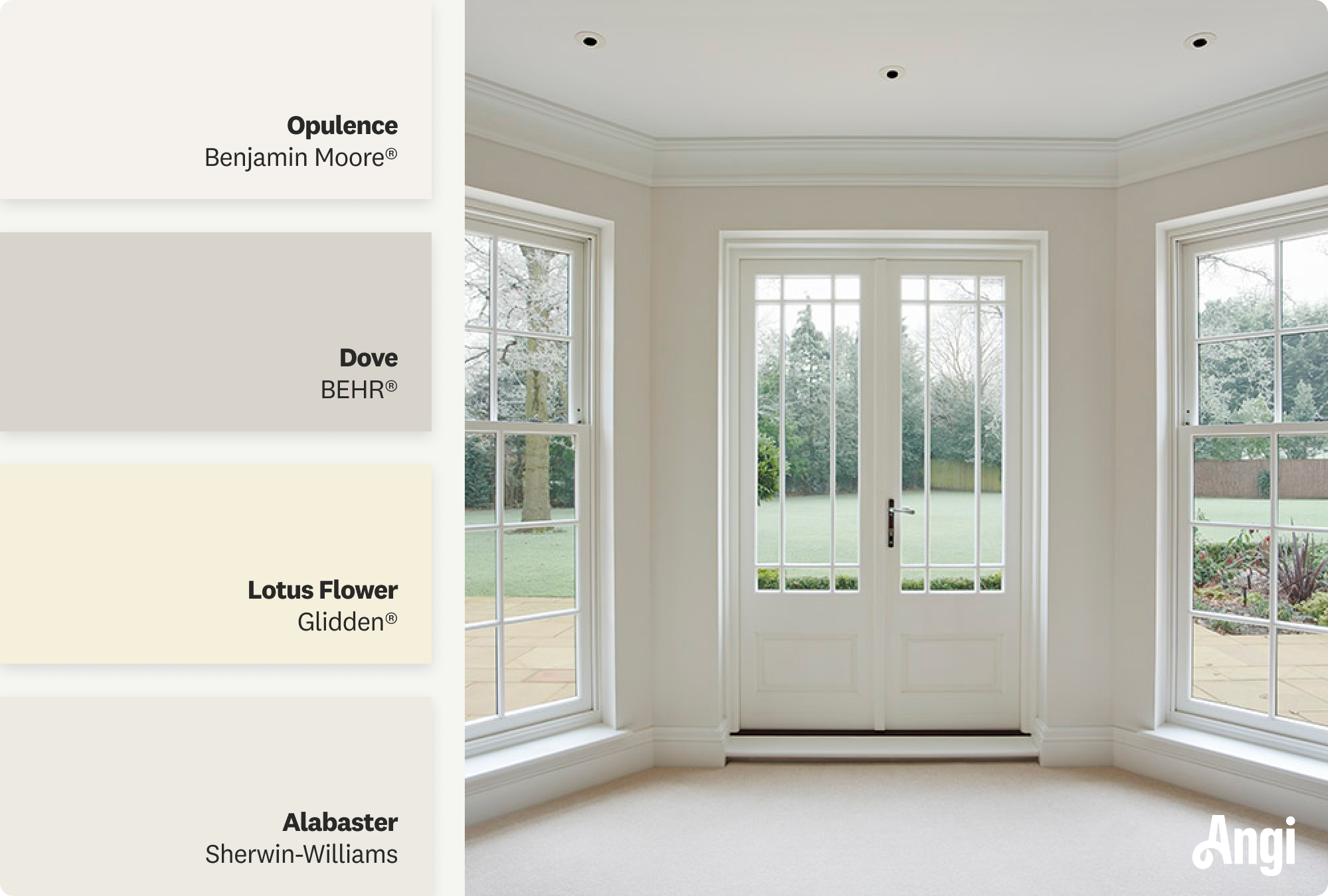
Warm white paint colors tend to feel cozy and relaxed. They pull undertones of yellow, cream, peach, and warm gray. Some warm whites are saturated to the point where they almost look greige.
This type of shade works well to accent homes with black roofing or natural wood trim. It’s also a good choice if you have yellow exterior paint colors on some of your home’s outdoor accents. Warm whites tend to reflect less light than their more neutral white counterparts. This means that homes sitting in direct sunlight will benefit from the softness of a warm hue.
For inspiration:
Sherwin-Williams Shoji White
Sherwin-Williams Oyster White
Sherwin-Williams Shell White
BEHR® Swiss Coffee
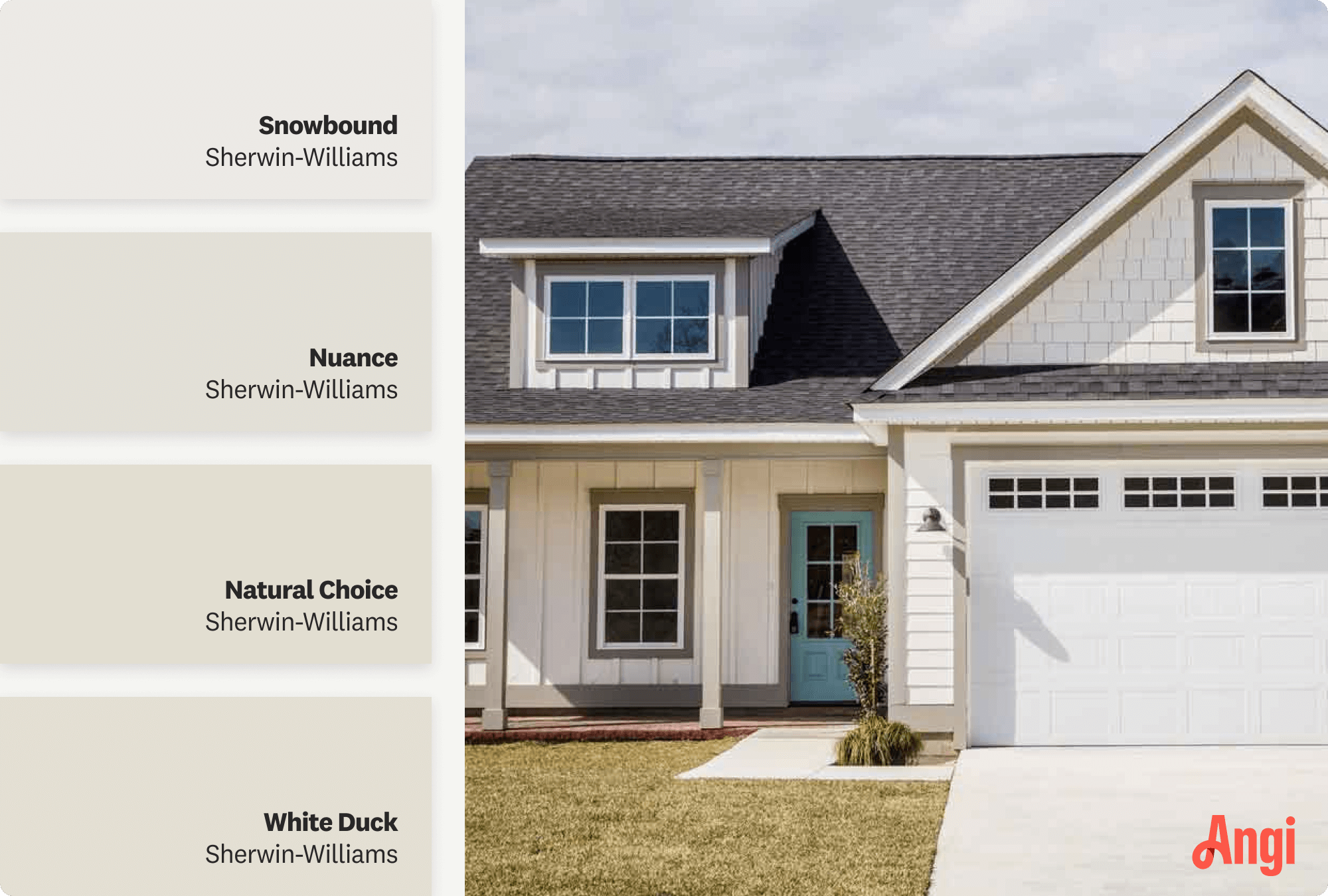
The greens, blues, grays, and purples of cool white paint colors relate well to the natural colors of the outdoors. Cool whites look particularly fresh against a blue sky and green landscaping, but they'll shine through on cloudy or rainy days as well. Cool colors also pair well with darker accents of black or gray to give a home a modern appearance.
For inspiration:
Sherwin-Williams Snowbound
Sherwin-Williams Nuance
Sherwin-Williams Natural Choice
Sherwin-Williams White Duck
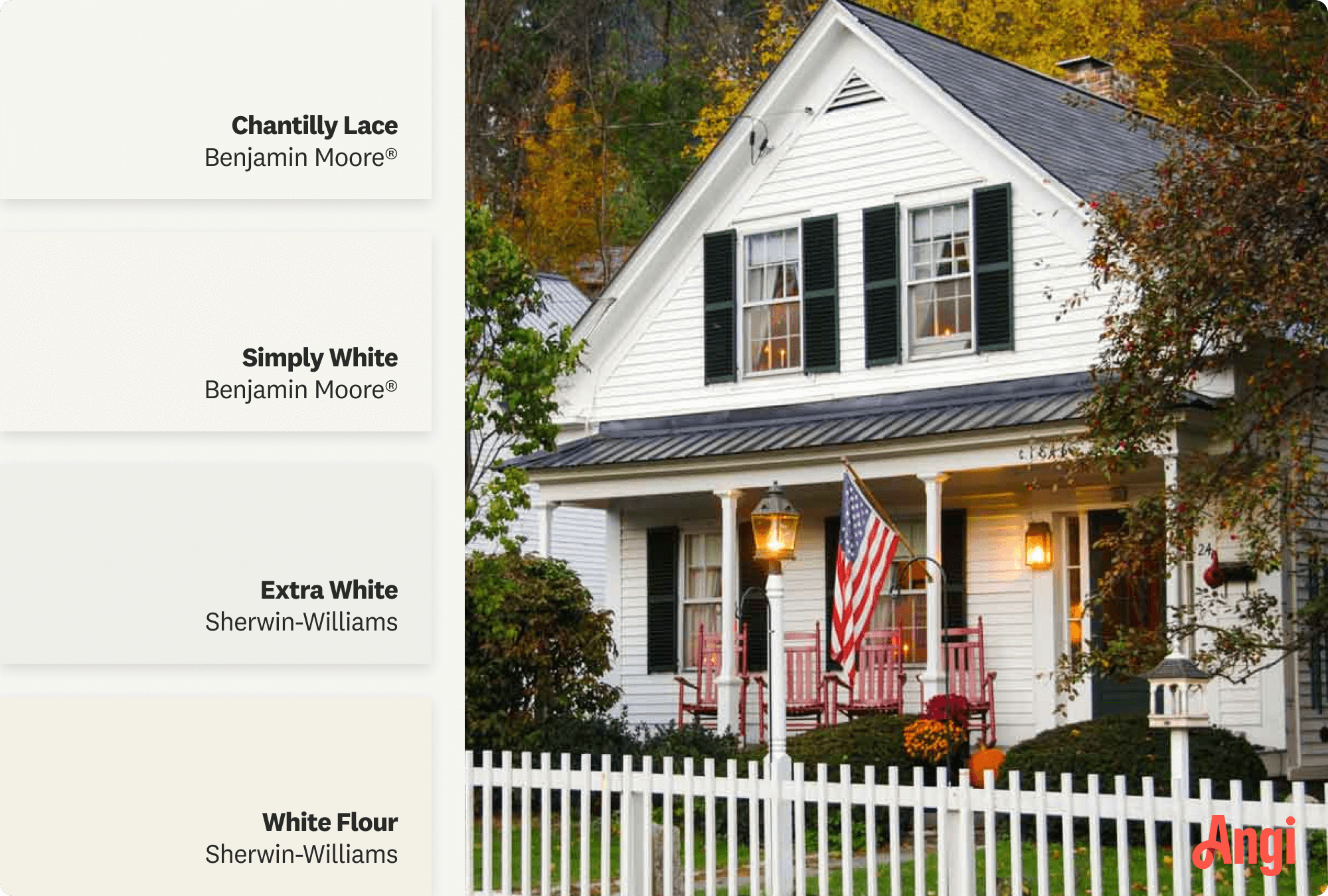
Neutral whites sit somewhere in the middle between warm and cool shades. They're as close as you can get to a true or pure white tone for your home's exterior. They pair well with various home styles and accent colors, including brick and wood. The classic look of neutral whites has made them very popular as barndominium exterior colors.
Neutral whites are often very light reflective for a bright, crisp, and clean appearance. They may still have warm or cool undertones, but they're very subtle and don't wash out the brightness of the white. For this reason, homes that are heavily shaded by trees still do well with neutral whites.
For inspiration:
Benjamin Moore® Chantilly Lace
Benjamin Moore® Simply White
Sherwin-Williams Extra White
Sherwin-Williams White Flour
With so many white house paint options to sort through, it helps to have tips for how to pick exterior paint colors. Keep the following in mind to find your perfect house color.
Pay attention to each color's light reflective value (LRV). Higher numbers reflect more sunlight and appear brighter.
Consider the shade coverage around your home and what undertones will look best given the sun exposure.
Think about the colors of your home's trim, doors, and other accents and what undertones will pair well with them.
Get several samples before you buy and paint them directly onto your exterior on multiple sides of the house. Watch how the look of each sample changes with different lighting throughout the day.
When buying paint samples, get them from the same store you plan to purchase from.
If you can’t decide between two favorite colors, consider a custom blend of both.
If you’re overwhelmed with white paint options but still want to ensure you make the right choice for your home, an exterior painter near you may be able to help. These are the pros you’ll call on to paint your house when it’s time, and they often have experience with color selection and what works best for certain home styles.
From average costs to expert advice, get all the answers you need to get your job done.

Painting your gutters can give your home the fresh finishing touch it needs to look its best. This guide walks you through the cost to paint gutters.

Do you want the color of your exterior doors to really pop? Learn about the labor cost to paint the front door, back door, and other entranceways.

The cost to paint a deck depends on its size, design, and whether you DIY. Read this guide to help set the budget for your deck painting project.

Window shutters and brick exteriors are like peas in a pod, but only with the perfect color combination. Here are the best shutter colors for brick houses.
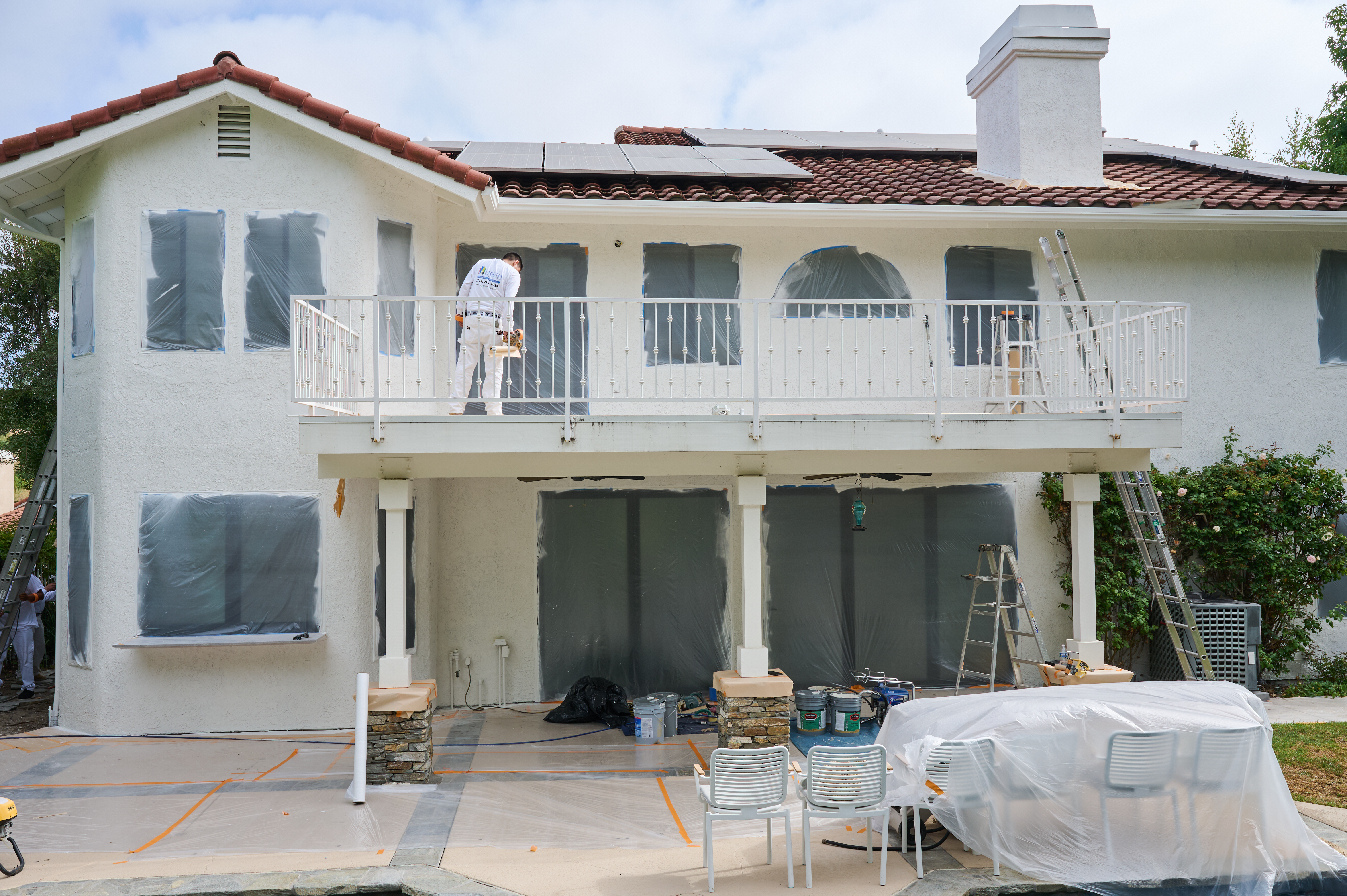
The best time to paint a home’s exterior depends on where you live. Read this to learn more about when to paint your house.

Learn the best paint colors for interior and exterior trim, whether you wish to go bold with black or stay neutral with whites and beige.